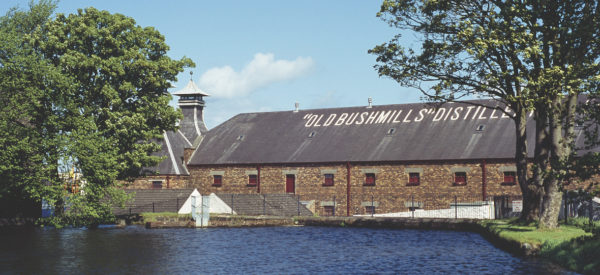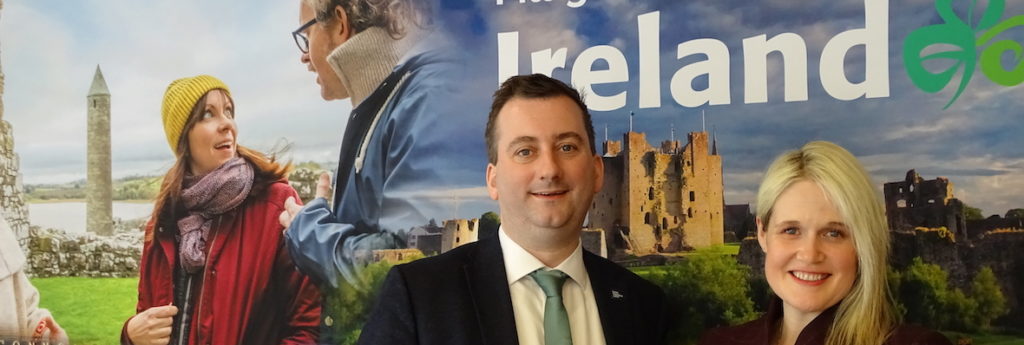Who knew that Irish whiskey might be paired with anything other than Guinness? Indeed, my bloodshot eyes were opened wide at a recent Irish whiskey tasting event, courtesy of Tourism Ireland, which highlighted the enticing elixir in combination with various cheeses and chocolates, and to my mind made the case that Bushmills isn’t merely for breakfast anymore.
Joking aside, the event was a clever departure for the tourist board during St. Patrick’s Day season, which hardly requires additional hype (it should be stated that at the time the coronavirus crisis had not yet largely caused the cancellation of today’s celebrations in Ireland and around the world). Instead, Tourism Ireland focussed on the country’s food and drink offerings, which Canadian director Dana Welch acknowledges are “not always top of mind” amongst visitors. Yet, “food and drink are vital elements of today’s holiday experience and a major contributor to increasing holiday satisfaction. We hope that events like these help raise awareness of Ireland’s rich food and beverage culture overseas,” she offered.
Queue a handful of delegates from the Irish whiskey trade – including reps for top distillers Bushmills, Jameson and Teeling, along with the Irish Whiskey Association’s “Head of Drinks” (a title I hope to one day hold), William Lavelle – who explained that Ireland is the birthplace of whiskey, though with an up-and-down history that saw the industry collapse and nearly disappear after 1940, from a peak of nearly 1,000 distilleries to just three.
But the industry has seen a renaissance in the past decade with the number of distilleries in Ireland jumping to 27 (with four more set to open by summer) and fully 17 of them offering some sort of experience for visitors.
“The world is flocking to Irish whiskey,” Lavelle said, noting that 34 percent of the Irish whiskey market hails from the US and Canada.
To that end, Lavelle points to the launch of a new platform, Irish Whiskey 360° (https://irishwhiskey360.com/), which gives visitors all the information they need to know about Irish whiskey and how to experience it on the Emerald Isle, including a centralized booking service for distillery visits.
Among the options are 400-year-old Bushmills on the Antrim Coast in Northern Ireland, which is believed to be the world’s oldest distillery, and, of course, Jameson Distillery on Bow Street in Dublin, the most visited such venue in Ireland.
I made a pilgrimage there a couple of years ago (open daily at 10, just in time for breakfast!) and collected many of the “240 years of stories” promised by tour guides, marking its 1780 founding. There is also hands-on participation and, of course, taste testing, which can be furthered at the onsite bar, or later courtesy of the extensive bottle shop. Keeners can also book a 90-minute “whiskey makers” masterclass.
Ever humble, Lavelle is quick to state that Irish isn’t necessarily “better” than its cousins – Scotch, Bourbon, and Canadian rye whisky – simply “different.”
The main distinction between Irish and Scotch whiskeys is that the Irish version is distilled three times rather than twice, resulting in a generally lighter vintage. (Another difference and fun fact: Irish and American whiskey is spelled with an e, Scotch whisky without).
But Lavelle also points to Ireland’s geography as a distinguishing factor. “What defines Irish whiskey is the people and the place,” he says.
Of course, talk is cheap and the distillers ultimately put their product where our mouths were, serving up samples of the sweet nectar, paired with Kerry Gold cheeses (cheddar, Dubliner, and blue) and with handmade Irish chocolate, including Butler’s dark and particularly piquant 70% from the Proper Chocolate Co in Dublin.
But it was also a serving of the type of authentic experience that Lavelle says visitors to distilleries in Ireland can expect.
“We want to make Ireland the most popular whiskey destination in the world,” he said. To which I say, sláinte (cheers)!
 Bushmills Distillery
Bushmills Distillery

